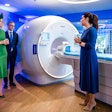
For years, I've heard urgent care operators gripe about the profitability of x-ray. In fact, I first wrote about this topic in 2013 in an article titled "Understanding the Economics of Urgent Care Lab and X-Ray Services."
 Alan Ayers.
Alan Ayers.The problem then, as of today, is that for urgent care centers, x-ray incurs significant capital investment in equipment and continual operating expense in the form of specialized personnel, inspections, overreads, and additional space.
For years, part of my role was to create a business case for upgrading analog x-ray to computed radiography (CR) or CR to digital radiography ... and my thesis almost always fell to a theoretical "we will lose business if we don't invest."
The point is that the return on investment of x-ray is very difficult to prove in urgent care, especially when "case rate" contracts reimburse a center at the same rate for all visits, regardless of services.
Today, I'm increasingly seeing the opening of more "limited scope" urgent care centers that do not provide x-ray, as well as conventional urgent care centers that aren't staffing radiologic technologists (RTs) during off-hours.
Both are problematic. The latter is inconsistent with payor and contract expectations for "urgent care," and both reinforce a lesser scope of care, making it difficult for all centers to attain higher reimbursement.
X-ray is a challenge for urgent care operators for multiple reasons.
First is the need for RTs. Some states require a licensed radiologic technologist with an associate degree to shoot x-rays. At a going rate of up to $25/hour, RTs are trained in multiple imaging modalities, so by working in urgent care, they're not utilizing their entire skillset.
Additionally, given that approximately 15% of urgent care visits require an x-ray, the RT's idle capacity is expected to be spent in medical assisting. RTs make for expensive medical assistants, and many RTs just don't want to do medical assisting work. I am seeing that RT is the most difficult position in urgent care to recruit.
In states where a licensed RT is not required, it's difficult to find medical assistants who have been trained as "basic machine operators." Providers complain that non-RTs don't provide the same quality of imaging due to less skill in positioning and focusing the machine.
On-the-job training takes time, scale, and organization. I've spoken with medical assisting career colleges like Remington College, Fortis College, and ECPI University, and they've said when they've offered limited-scope x-ray courses for medical assistants in the past, enrollment was too thin to make the program profitable. So while an assistant trained in basic x-ray would be ideal, they're "unicorns" that are hard to find and retain.
Second is reimbursement. National payors offering case-rate contracts that pay the same fee regardless of the services performed disincentivize x-rays and lab tests. Even under fee-for-service, if x-ray reimbursement does not cover the incremental labor cost of an RT, overread charges, PACS expense, depreciation on a $75,000 digital x-ray suite, inspections, certificates, and other direct and indirect costs ... you see the challenge.
The value proposition is purely theoretical that without x-ray an urgent care center will be seeing a lower acuity of patients. I'm not a clinician, but it does seem x-ray is a critical tool in diagnosing pneumonia and other "coughs."
And it should turn patients (and payors) off to be "dumped" on the emergency department for a CT scan when initially presenting with a basic "urgent care" condition. In fact, I've read the Google reviews -- patients expecting an x-ray have no patience when x-ray is unavailable.
Third is volume. I've had experience with providers who order an x-ray on 3% to 15% of patients. Let's take the high number -- 15%. That's 7.5 x-rays per 12-hour day for a center seeing 50 patients. For a center seeing 35 patients, that's five x-rays per day or less than one every two hours.
As centers with "global" contracts and staffed with physician assistants (PAs) and nurse practitioners increasingly refer out nonsurgical orthopedic cases, focusing more on head/chest, it's increasingly difficult to make a case for x-ray.
But this low volume -- even under the best scenario -- helps explain why an urgent care center may forgo having a radiologic technologist on staff during nonpeak times, especially if they can't find any to hire. Providers can, in most states, take the x-ray, but my experience is that medical directors are simply unwilling to require physicians and PAs or NPs to shoot images.
To truly "add value" and justify the expense of a brick-and-mortar operation, urgent care must rise on the acuity scale. X-ray is considered a defining feature of urgent care as well as a requirement in "urgent care" (Place of Service 20) contracts. Higher reimbursement is justified to the extent that urgent care can keep patients out of the ER, out of orthopedic offices, and by preventing minor conditions from evolving into something more serious and costly to treat.
But without x-ray, brick-and-mortar becomes an expense of urgent care not present in telemedicine, on-demand primary care, or retail clinics. Indeed, x-ray is a "core" value proposition of urgent care.
Given that consistently providing x-rays is a problem that affects just about every urgent care center, the industry should organize to address this issue. Playing offense would be to identify and break down the barriers that prevent medical assistants from becoming basic machine operators. Playing defense would be to work with payors to emphasize urgent care's value proposition beyond "triage medicine" to justify higher reimbursement to cover the cost of diagnostic services like imaging and lab.
Digital radiography has dropped precipitously in price, and high-quality overreads by board-certified radiologists are widely available to urgent care centers with rapid turnaround -- many times while the patient is still in the center. The biggest "nuts to crack" are finding someone to shoot the images cost-effectively and assure fair and adequate reimbursement.
Alan Ayers is a national expert in urgent care and occupational medicine strategy and operations. This article was originally published on his LinkedIn page.
The comments and observations expressed are those of the author and do not necessarily reflect the opinions of AuntMinnie.com.



















